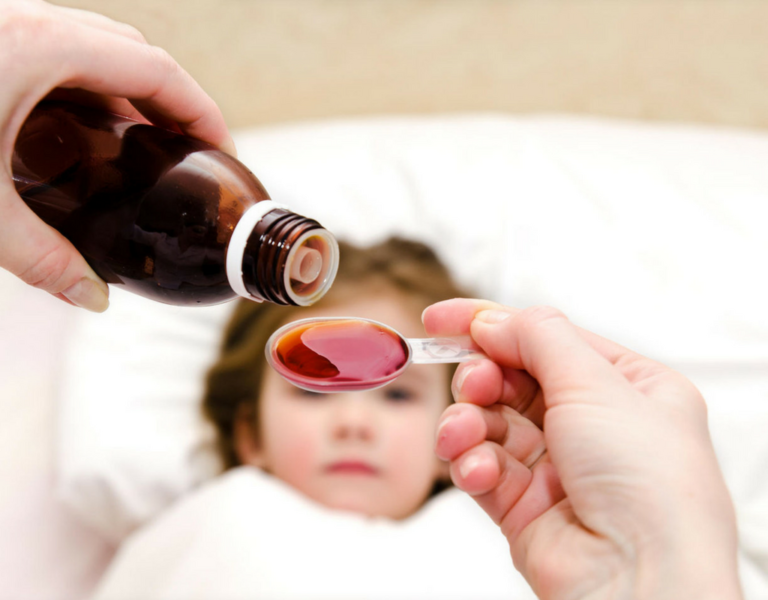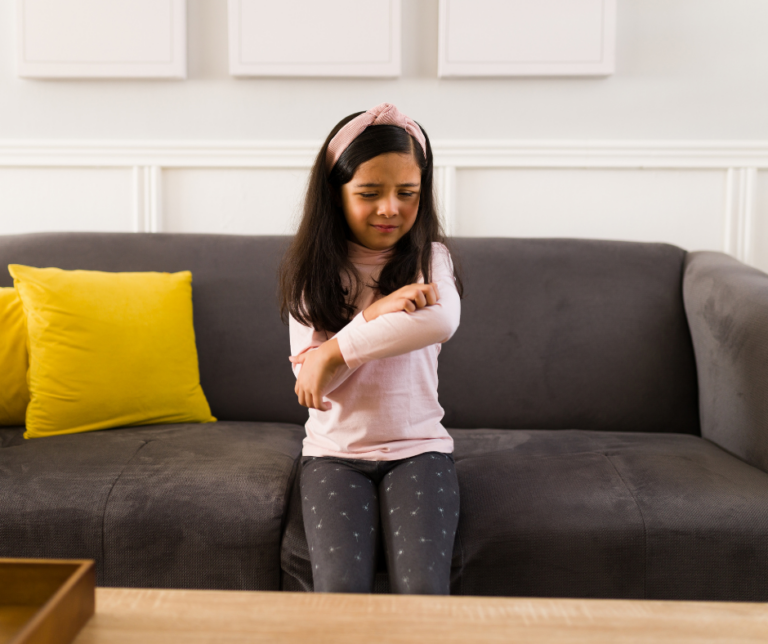Now that school is almost out, your child will be spending more time in the great outdoors. Summer skin care is important at every age, so here are some tips and ideas to keep your children safe and healthy.
HYDRATE!
Your child’s skin needs proper hydration just as much as their body. Skin is the largest of our organs and requires adequate hydration to perform at its best. Children don’t always recognize signs of thirst or take the time to get a drink of water, which puts them at greater risk for dehydration—especially in hot and humid summer conditions.
Encourage your child to drink plenty of water throughout the day, and more when they’re playing out in the sun. Say no to sports drinks and soda, which are loaded with sugar and may contain caffeine, which acts as a diuretic.
It’s important to make sure your child drinks water before he or she is really thirsty. Thirst is a sign that your child is already dehydrated.
How much water your child should drink depends on their diet, age and activity level. Babies younger than 6 months of age should not drink water at all (breastmilk and/or formula has all the water they need) and babies 6-12 months of age can only have limited water due to their developing kidneys.
For more information on summer hydration check out this great post from Children’s National.
Fun in the Sun
Use a broad-spectrum sunscreen that protects from UVB & UVA rays for children six months and older. For babies younger than six months, keep them in the shade under an umbrella or stroller canopy and wearing clothes that cover as much skin as possible. This is why there are so many cute baby sunhats and sunglasses out there — it’s not just fashion but sun safety too!
While many parents prefer a spray sunscreen because it’s easier to apply to squirming kids, it can be difficult to apply evenly and harmful if inhaled. If you use a spray sunscreen, be sure to cover evenly, spray on your hand before applying it to your child’s face, and apply outdoors. For younger kids, consider buying a disappearing-color sunblock lotion, so you can immediately see the application area for zero missed spots.
Let your kids see you using sunscreen regularly too and set the example! Studies show a correlation between childhood sun exposure and developing skin cancer as an adult. Tanning is trending again for teens, so try to make sure your older children are wearing sunscreen as well, and encourage your teens to get gradual, safe sun exposure.
Other tips:
- Wear protective clothing like lightweight, long-sleeved shirts, wide brimmed hats and sunglasses to provide an extra sun blocking layer
- Avoid midday sun exposure, even with sunscreen
- Reapply sunscreen every one or two hours and immediately after swimming or heavy sweating
- Apply sunscreen even when it’s cloudy
- Don’t forget the ears, back of the neck, back of the knees, hands, and tops of the feet
Stop the Itch
Children’s skin can be itchier in the summer too, with plant exposure, bug bites, and allergies. Here are some tips:
- Avoid bug bites by applying a product that contains DEET as its active ingredient; a thin layer should be applied to all areas of exposed skin. It comes in sprays, lotions, and even wipes for easy application.
- Learn what poison ivy, poison oak, and poison sumac look like in your area, teach your children what they look like, and do everything possible to avoid the poisonous threesome. If on unfamiliar territory or trails, wear protective clothing, especially around your feet and ankles. If you even suspect exposure, remove the clothing as soon as possible, and apply rubbing alcohol or wash the affected areas with degreasing soap (like dishwashing soap – Dawn is great), or specially formulated products that remove the stubborn plant oils. Don’t forget to wash underneath your fingernails – the oils can hide there and spread the rash as you touch your body or scratch.
- If your child suffers from allergies that cause itching – or unknown itching – in the summer, apply cool compresses or ice packs to the affected area; give your child an oatmeal bath; apply topical anesthetics that contain pramoxine; or apply cooling agents like menthol or calamine. Oral diphenhydramine (Benadryl) can also be used as needed in more severe cases.
- For severe rashes, it may be necessary to be seen at the office for evaluation and treatment.
Tick Off
Northern Virginia is home to an abundance of wildlife… and ticks. Ticks can be infected with bacteria, viruses, or parasites, so it’s important to prevent tick bites when possible and take swift action when needed.
Before You Go Outdoors
- Teach your children about ticks and where to expect them. Ticks live in grassy, brushy, or wooded areas, or even on animals, so spending time outside means possible exposure. Many people get ticks in their own yard or neighborhood.
- Treat clothing and gear with products containing permethrin. Permethrin can be used to treat boots, clothing, and camping gear and remain protective through several washings.
- Use Environmental Protection Agency (EPA)-registered insect repellents containing DEET or picaridin. EPA’s helpful tool can help you find the product that best suits your needs. Always follow product instructions, especially with children.
- Do not use insect repellent on babies younger than 2 months old.
After You Come Indoors
- Check your children’s clothing and body for ticks. Remove any ticks and wash clothes in hot water, or put them in dryer if damp. Tumble dry clothes in a dryer on high heat for at least 10 minutes to kill ticks on dry clothing after you come indoors.
- Shower or bathe your children soon after being outdoors. Showering within two hours of coming indoors has been shown to reduce the risk of getting Lyme disease and may be effective in reducing the risk of other tickborne diseases. Showering or bathing may help you locate attached ticks and wash off others.
What to Do if You Find an Attached Tick
- Remove the attached tick as soon as you notice it. Grasp the tick with tweezers, as close to the skin as possible, and pull it straight out.
- Watch for signs of sickness such as rash or fever in the days and weeks following the bite. The risk of getting a tickborne disease depends on many factors, including where you live, the type of tick that bit, and how long the tick was attached. Be sure to see a health care provider if your child becomes sick after a tick bite, has a rash or a fever.





